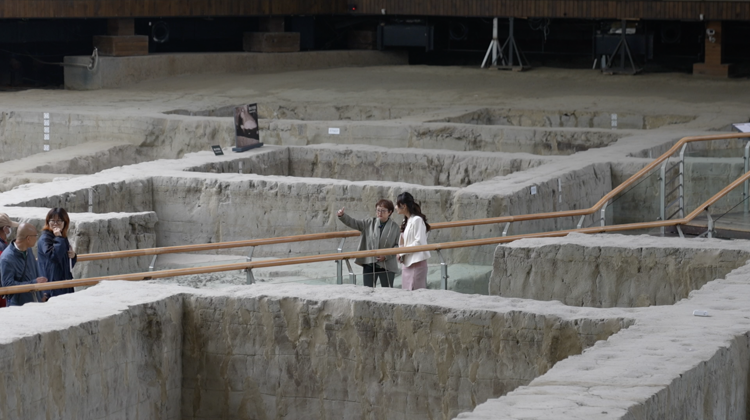

LIMA, PERU / CHENGDU, CHINA - Media OutReach Newswire – 13 November 2024 -All this week, Peru is hosting the Asia-Pacific Economic Cooperation (APEC) Meetings in Lima.
There is also an exhibit about the connections between China and Peru - two ancient civilizations that, despite their distance, share striking cultural similarities, a link that transcends both time and space.
In the heart of Lima, archaeologists are uncovering the secrets of Huaca Pucllana, a 1,500-year-old ceremonial site.
Nature, especially the sea, holds a central place in Peru’s pre-Inca cultures.
“Andean rituals often honor nature, and here in Lima, we see more marine symbols due to our proximity to the sea. Striking a shark’s head with a stone was an offering to the gods,” says archaeologist Gladys Paz Flores.
This tribute to nature is etched into the architecture itself, with each hand-molded brick forming a ceremonial center resilient to centuries of earthquakes.
“We have so much to learn from our ancestors,” says Paz. “In today’s world, we should care for our homes and embrace our responsibility to humanity.”
(Exploring ancient relics at Jinsha Site Museum in Chengdu China, filmed on Oct 31st, 2024)
Meanwhile, in southwestern China, the ancient Shu civilization also shows reverence for nature. At an archaeological site in Chengdu’s Jinsha archaeological site, relics reveal a deeply symbolic connection to the sun, much like Peru’s Inca.
One standout artifact is a gold ornament entitled “Sun and Immortal Birds.” “It features four birds encircling the sun, a powerful symbol of sun worship," said Wang Fang, Deputy Director of the Jinsha Site Museum. Similarly, the Inca rulers saw themselves as ‘descendants of the sun’ and built temples in its honor.
The link between these civilizations has received greater visibility at the APEC Meetings, where Chengdu’s artifacts are on display at the Inca Museum in Cusco, Peru. Since the original relics are too delicate to travel, the exhibition showcases 3D-printed replicas.
“Some of these artifacts are as thin as 0.02 centimeters, like paper-cut art. They carry the ideas and aspirations of early humans, and technology allows us to share this legacy globally,” said Wang.
As visitors explore these exhibits, APEC leaders are reminded that ancient insights into nature’s significance remain relevant today. In an age of climate change and ecological uncertainty, the wisdom of Peru and China’s ancient cultures offers lessons for future generations.
This APEC gathering also aligns with the 10th anniversary of Chinese President Xi Jinping’s proposal for building a China-Latin America community with a shared future.
China, as the largest trade partner for many countries in the region, continues to expand cooperation across technology, green energy and aerospace.
As noted by Chinese Foreign Ministry spokesperson Lin Jian, the China-Latin America and the Caribbean relationship emphasizes equality, mutual benefit, innovation, openness, and people-centered progress, heralding a new era of collaboration.
COMUNICATO STAMPA SPONSORIZZATO: Immediapress è un servizio di diffusione di comunicati stampa in testo originale redatto direttamente dal soggetto che lo emette. I giornalisti Adnkronos non sono in nessun modo coinvolti né responsabili per i contenuti dei comunicati trasmessi.